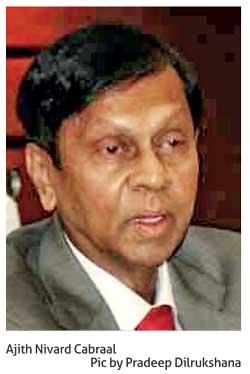21 Jan 2022 - {{hitsCtrl.values.hits}}
The Central Bank yesterday tightened monetary policy for the second time in five months to tame the soaring consumer prices and also alongside took a host of other measures to ameliorate the foreign exchange situation, which fell to crisis proportions in recent times.
 The Monetary Board which met on Wednesday for the first time this year to determine the trajectory of the rates decided to raise its key policy rates—Standing Deposit Facility Rate (SDFR) and the Standing Lending Facility Rate (SLFR)—by 50 basis points each to 5.50 percent and 6.50 percent, respectively.
The Monetary Board which met on Wednesday for the first time this year to determine the trajectory of the rates decided to raise its key policy rates—Standing Deposit Facility Rate (SDFR) and the Standing Lending Facility Rate (SLFR)—by 50 basis points each to 5.50 percent and 6.50 percent, respectively.
Speaking to the media after the release of the Board’s decisions, Central Bank Governor, Ajith Nivard Cabraal said the moves were taken to send a, “clear message that we want to see the inflation being dealt with and also to give a message that external sector needs to be stabilised further.”
In the run up to this week’s monetary policy meeting, majority of economists and analysts expected at least a 25 basis point policy rate hike to fend off inflationary pressures and the foreign exchange crunch, both of which were going out of control.
Sri Lanka’s consumer prices hit a twelve-year high of 12.1 percent in the year through December 2021, while food prices surged 22.1 percent during the same time span, reflecting that the price pressures are entrenched and are going to cause pain for the masses.
However, the Central Bank still expects inflation to be transitory as bulk of the price pressures are perceived to be stemming from the prolonged supply chain troubles facing the entire world, which is largely expected to subside during this year.
This week’s policy pivot is a signal that the Central Bank does not hesitate to act should demand-driven pressures add to the prices as seen from the core inflation, which is measured barring the often volatile items in the inflation basket such as food, energy and transport.
“Such supply driven price pressures are expected to be transitory, although the possible build-up of demand driven inflationary pressures may compel the adoption of proactive monetary policy measures, which will also help in managing inflation expectations,” the monetary policy statement issued by the Central Bank stated.
This week’s policy decision also signaled that the Central Bank is in lock step with the rest of the developed and emerging markets’ central banks with the exception of China, which have either raised their policy rates or shown serious inclination to do so.
China’s Central Bank this week cut its benchmark borrowing rate for the second straight month in a bid to support the slowing economy facing a fresh wave of coronavirus cases and reeling from a string of regulatory crackdowns in the recent past.
Meanwhile, Bank of England Governor, Andrew Bailey testifying this week before the Treasury Committee underscored the hawkish impulses after the United Kingdom reported 30-year high inflation of 5.4 percent this week for December 2021.
The United States Federal Reserve a couple of weeks ago committed to faster the tapering to make way for early interest rate hikes and shrinking its US$ 8.8 trillion balance sheet starting from the end of this year to check inflation, which hit a 40-year high of 7.0 percent in December, 2021.
This week’s rate hike is expected to encourage savings, discourage consumption and thereby the imports, which hit an all-time high last year despite the pandemic and foreign exchange shortage.
“In keeping with this policy stance, the Central Bank expects a corresponding increase in interest rates, particularly in deposit rates, thereby encouraging savings, while discouraging excessive consumption, which also fuels imports,” the statement noted.
“Therefore, financial institutions are urged to swiftly pass on this increase to deposit rates of customers,” it added.
The Central Bank also expects the policy shift to help it to shrink its own balance sheet by facilitating the reduction of Treasury bill holding it has on behalf of the government.
24 Nov 2024 5 hours ago
24 Nov 2024 5 hours ago
24 Nov 2024 5 hours ago
23 Nov 2024 23 Nov 2024
23 Nov 2024 23 Nov 2024